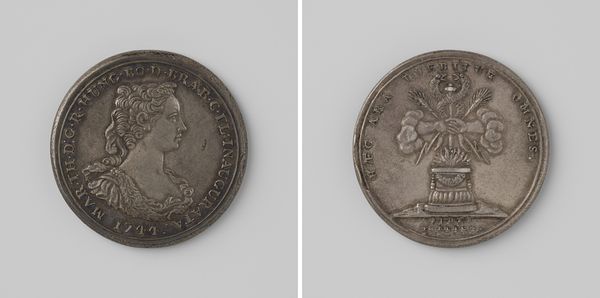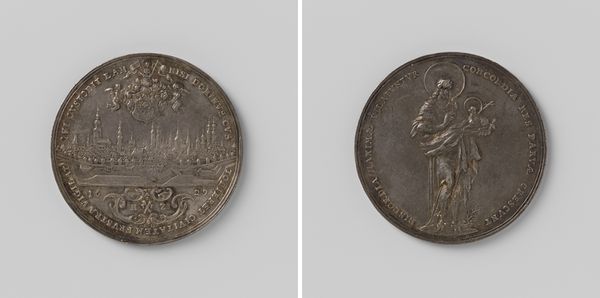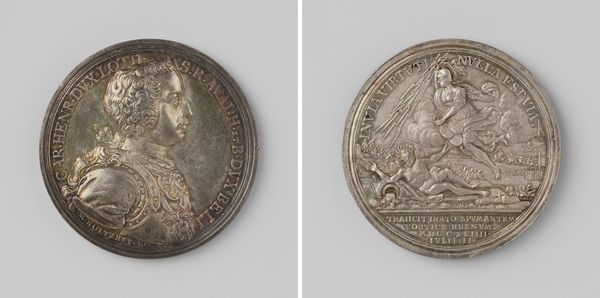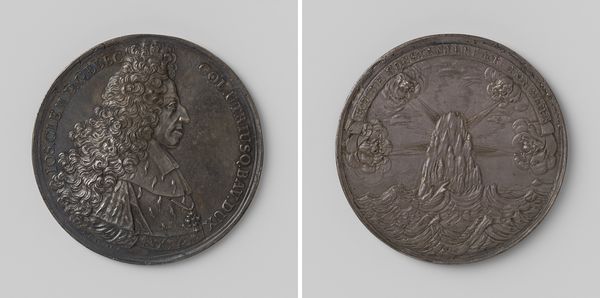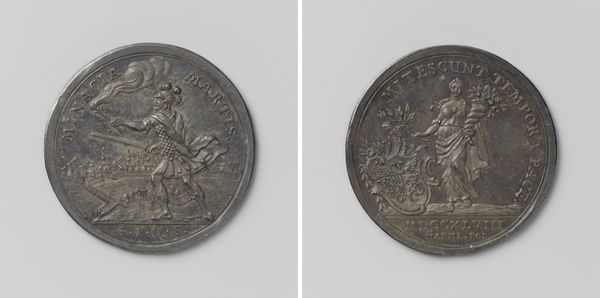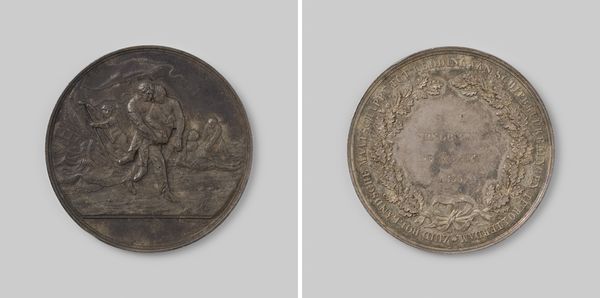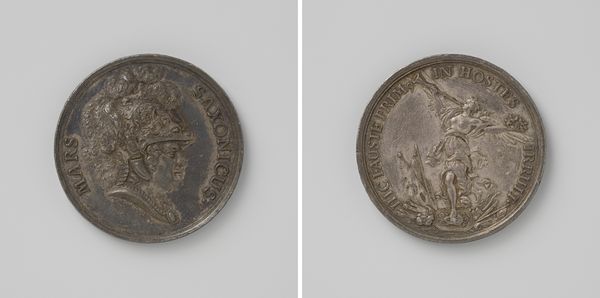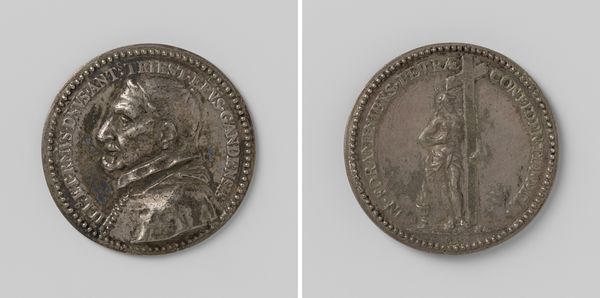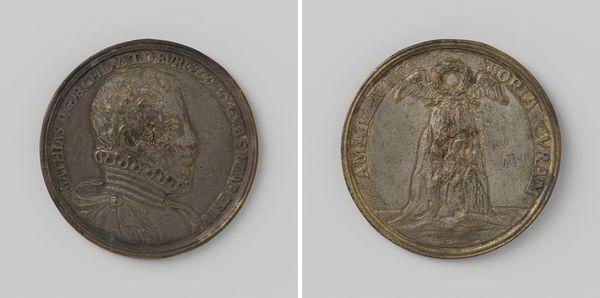
metal, sculpture
#
baroque
#
metal
#
sculpture
#
sculpture
#
ceramic
#
history-painting
Dimensions: diameter 5.3 cm, weight 67.81 gr
Copyright: Rijks Museum: Open Domain
Editor: So this is Johann Melchior Mörikofer's 1754 metal sculpture, "Albrecht von Haller, natuurkundige, bioloog en dichter te Bern". It's a medal, right? The details are amazing for something so small. It looks a bit worn. What do you make of it? Curator: This piece presents a fascinating intersection of art, science, and civic identity. Medals like these were often commissioned to celebrate individuals deemed important to the cultural or political landscape. Haller’s prominence as a scientist and poet made him a suitable subject, but think about *why* a medal, specifically? Editor: It's... official, somehow? More than a portrait, maybe? Curator: Exactly. Its creation and distribution reinforced Haller’s public image and cemented his legacy. The medal’s imagery – note the laurel wreath, the inscriptions – all contributed to a narrative of accomplishment and service to the nation. Medals functioned within a system of patronage and public recognition. The slight wear you observed hints at its circulation. Where would such a medal be displayed, and who would view it? Editor: Maybe distributed to dignitaries or institutions as a mark of honor? Did the Baroque style lend itself well to this kind of propagandistic use of art? Curator: The Baroque emphasis on grandeur and emotional impact certainly made it effective for communicating power and status. It encouraged engagement. These objects weren’t merely decorative; they played an active role in shaping public perception. This medal connects us to how intellectual achievement was valued and communicated in 18th-century society. Editor: I see it now! It’s like a tiny billboard of prestige and accomplishment. Thanks! Curator: A good analogy. I found it quite instructive to unpack the layered cultural context of this medal with you.
Comments
No comments
Be the first to comment and join the conversation on the ultimate creative platform.



